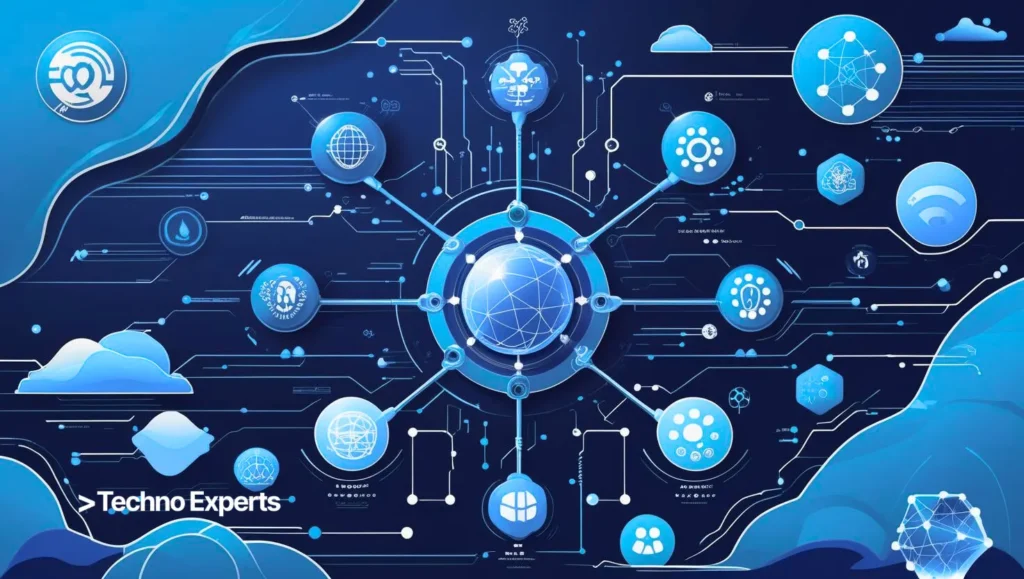The Internet and network infrastructure form the backbone of today’s digital world. Every online activity—whether streaming, shopping, working remotely, or browsing—relies on a complex system of hardware, software, and communication protocols. At its foundation, the Internet is powered by the Internet protocol suite (TCP/IP), which allows billions of devices to communicate globally.
In this article, we’ll explore the history of the Internet, its core infrastructure, the role of TCP/IP protocols, the social and economic impact, cybersecurity threats, environmental concerns, and what the future holds for global connectivity.

1. The History of the Internet
The Internet began in the late 1960s as ARPANET, a U.S. defense project focused on secure communication. It pioneered packet switching technology, allowing efficient data transfer across multiple paths. By the 1990s, the World Wide Web (WWW) transformed the Internet into a commercial and public platform, fueling e-commerce, digital media, and global communication.
As the Internet evolved with the rise of the World Wide Web, businesses began building digital platforms to reach global audiences. At Techno Experts, our Web Development Solutions help companies create robust, scalable, and user-friendly websites that align with modern Internet infrastructure.
2. Core Components of Internet and Network Infrastructure
a) Network Hardware
- Routers and Switches: Direct and manage data transmission between networks (Cisco).
- Servers: Host websites, applications, and data storage.
- Cables & Fiber Optics: Provide high-speed global connectivity.
- Wireless Access Points: Enable mobile and Wi-Fi connectivity.
b) Network Software
- Operating Systems: Manage devices and network communication.
- Protocol Suites: Govern digital communication (IANA Protocols).
- Security Tools: VPNs, firewalls, and intrusion detection safeguard against cyberattacks.
c) Network Services
- Domain Name System (DNS): Translates domains into IP addresses.
- ISPs: Connect users and organizations to the Internet.
- Hosting & Cloud Services: Enable websites, applications, and enterprise networks.
3. TCP/IP Protocols: The Language of the Internet
The TCP/IP protocol suite is the foundation of Internet communication.
- IP (Internet Protocol): Routes and addresses data packets.
- TCP (Transmission Control Protocol): Ensures reliable and ordered delivery of information (Cerf & Kahn, 1974).
- UDP (User Datagram Protocol): Used for real-time applications like video streaming.
- HTTP/HTTPS: Power web browsing and secure e-commerce transactions.
These protocols allow seamless communication across devices, ensuring the Internet and network infrastructure works globally.
4. Social and Economic Impact of the Internet
The Internet has transformed every sector:
- Global Communication: Email, VoIP, and video calls make real-time collaboration possible.
- Business & Remote Work: Companies thrive on cloud computing and digital marketplaces.
- Digital Publishing: Blogs, wikis, and social media democratize knowledge sharing.
According to the International Telecommunication Union (ITU), expanding Internet access is critical to bridging the global digital divide.
5. Cybersecurity Threats and Challenges
With growth comes vulnerability. Modern infrastructure faces:
- Malware and Viruses: Disrupt business and compromise data.
- Cyber Surveillance: Raises privacy concerns for individuals and organizations.
- Censorship & Regulation: Limits free access in some regions.
The NIST Cybersecurity Framework provides guidelines for organizations to protect digital assets and enhance trust.
With growing cybersecurity risks, protecting digital assets is more critical than ever. Techno Experts provides Data Security and Protection Services designed to safeguard networks, prevent breaches, and ensure business continuity.
6. Environmental Impact of Internet Infrastructure
While the Internet enables innovation, it also creates environmental challenges:
- Data Centers: Consume massive amounts of electricity.
- Network Equipment: Adds to global carbon emissions.
- Green IT Solutions: Initiatives like renewable-powered data centers reduce impact (Greenpeace Report).
Techno Experts can highlight its green IT practices to align with sustainability goals.
7. The Future of Internet and Network Infrastructure
The next phase of Internet development includes:
- 5G & Beyond: Ultra-fast, low-latency connectivity.
- Edge Computing: Processing data closer to users for efficiency.
- AI & Automation: Enhancing traffic management and cybersecurity.
- IoT Expansion: Billions of devices interconnected worldwide.
Analysts like Gartner predict future infrastructure will blend speed, scalability, and sustainability.
Conclusion
The Internet and network infrastructure are the foundation of our digital society. From routers and TCP/IP protocols to data centers and cloud services, these systems enable everything from communication to commerce. However, challenges like cybersecurity threats and environmental impact must be addressed to ensure a resilient and sustainable future.
For businesses, investing in robust IT and networking strategies isn’t optional—it’s essential. At Techno Experts, we help organizations harness reliable digital infrastructure to stay ahead in the connected world.
